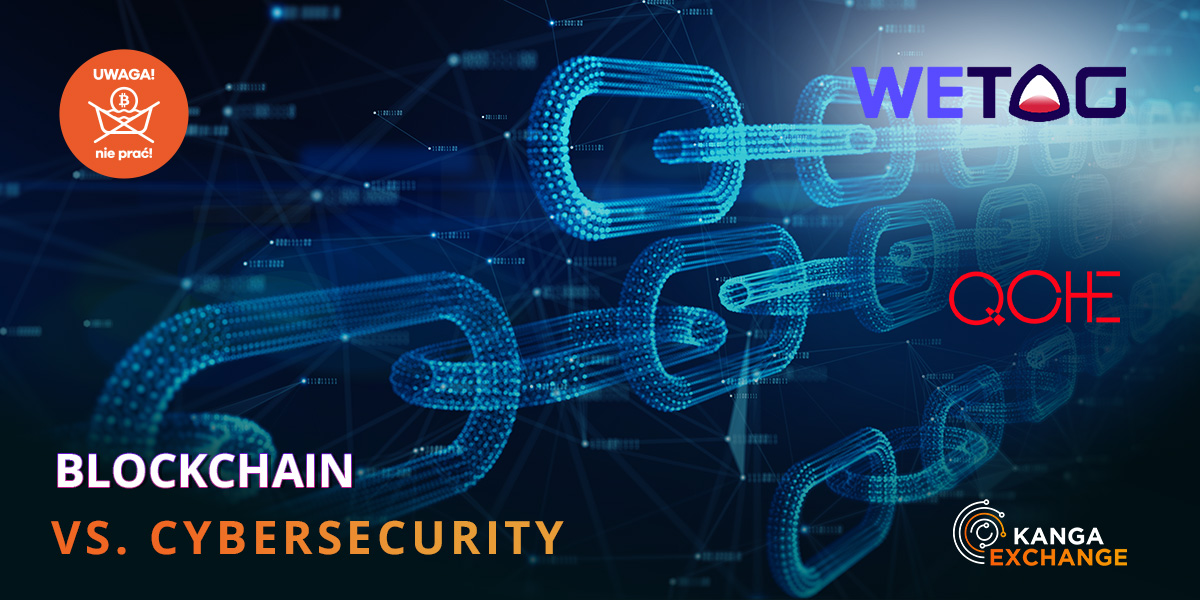Blockchain technology as the basis for cryptocurrencies

Written by
Kanga
Published on
We had the chance to learn quite a lot about cryptocurrencies and their dark side connected with illegal trade in the previous articles.
This time we will get a closer look at the technology thanks to which the cryptographic currency exists at all. Blockchain (since that
is the technology we will be discussing) is an innovation with a potential to revolutionize the whole world in terms of finances as well
as cybersecurity and data exchange. The idea behind it is easy to comprehend and the knowledge of its basic mechanisms opens the way
to understanding the potential that lies beneath. Let us, however, start with the most important aspect.
What is Blockchain technology?
Blockchain is a digital database represented by blocks connected to one another in a chain. It is a decentralized record of online transactions within a given network. Specific information is saved in the form of blocks which are recorded in a chronological order. Each new piece
of information generates a new block. The same occurs whenever changes are made to the previously recorded data.
Although Blockchain is an innovative solution, its archetype is the well-known paper ledgers, which are stored on many computers in a digital form and which are synchronized in many locations with the use of a Distributed Ledger Technology (DLS). Unlike its centralized counterparts, the distributed systems guarantee a free movement of information and are more resistant to frauds and all types of cyberattacks. Thanks to those features saving, storing and tracking such important information as medical records or chain transactions is secure.
What changes does Blockchain bring
to the nature of cybersecurity?
Undoubtedly, the fundamentals of how blockchain works – the trust, accountability and transparency – are the revolutionary aspect
of the technology. The information entered into a blockchain belong in full to their creators, because even when the data is shared, they
are the ones who decide who can access the information and in what way. All users with access to the saved information within one record can see the history of the entered alterations.
With the increasing number of cybercrimes, Blockchain is becoming a crucial resource in the area of cybersecurity. As we can read in ‘Blockchain & Cyber Security. Let’s Discuss’, a report prepared by Deloitte : ‘Encrypting data on a blockchain can provide organizations with a level of protection from a data confidentiality and data access control perspective.
As an example, implementing secure communication protocols on blockchain (assuming the latest security standards and implementation guides), guarantees that even in a situation where an attacker tries to do a man-in-the-middle attack the attacker won’t be able to either forge the interlocutor’s identity or disclose any data while in transit. Thanks to the fact that the process of storing data is automated the human error, which is one of the main causes of security breach incidents, is decreased to a minimum.
The information contained in a blockchain is very difficult to forge. Each block of data is digitalized with the use of a hash that is based on the content of all blocks in the blockchain. In case any changes are made, the generated hash will no longer correspond to its original and the change will be detected. Moreover, standard security protocols can be developed with the use of Blockchain technology as a more solid alternative to the end-to=end encrypting. The technology may also be used to protect private correspondence via communicators.
So how does Blockchain technology enable the use of cryptocurrencies?
The first attempts at using Blockchain appeared in the early 1990s. However, the full use was possible only with the creation of Bitcoin
in 2009. The whole protocol of this cryptocurrency was based on a revolutionary technology that made it possible to record payments
in a transparent way. Currently, over 18,000 different digital currencies operate in the market, a great portion of which is based
on decentralized networks of blocks providing the highest degree of security of the carried transactions. The cryptocurrencies are obtained
by extracting (called mining) or by purchasing them in such cryptocurrency exchanges as Kanga Exchange.
Due to having common origins, the terms ‘blockchain’ and ‘cryptocurrencies’ are often used interchangeably. However, we must understand that the former constitutes the basis for the existence of the latter. The decentralized nature of Blockchain allows it to be used in sectors which go beyond finances and banking. Experts point to such areas as e.g. to education, insurance, medical care, management, delivery, energy technology and IoT.
Although Blockchain has its faults, it is a technology that has a bright future ahead. It works brilliantly as a system of transferring data. Nevertheless, the world fully operating on the basis of Blockchain is a distant future. How will this reality change? We will certainly learn soon enough.
Hanna Sudak, WETOG PL
for Kanga Exchange